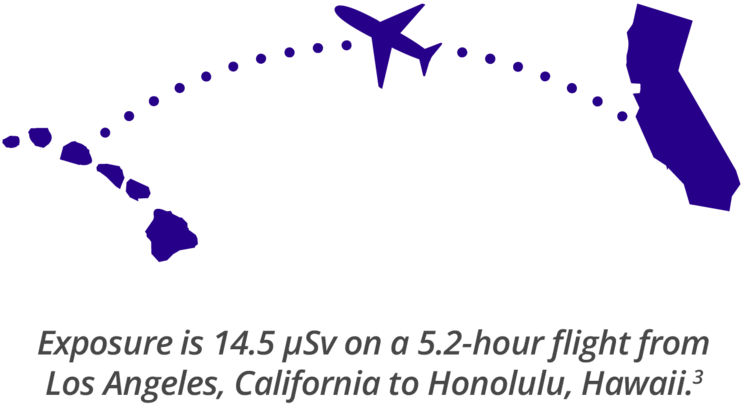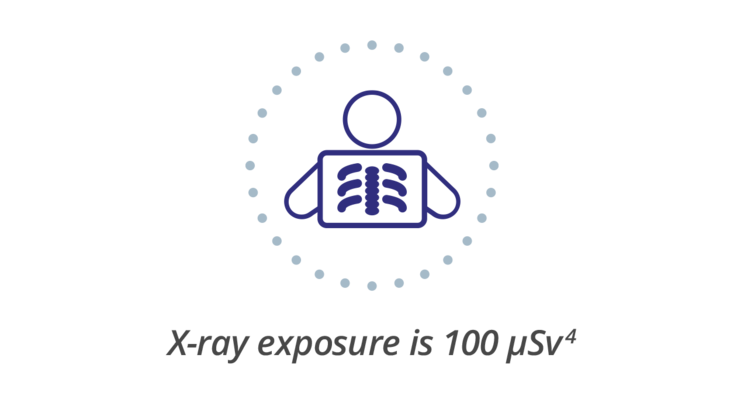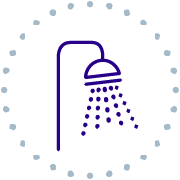Radiation guidelines for HCPs and caregivers
Radiation exposures to the care team and caregivers were within ICRP limits of 20 mSv per year1,2,*
Radiation exposure in HCPs and caregivers following outpatient treatment with Lutetium 177 on the LUTATHERA regimen was tested in an outpatient study with 4 sequentially treated patients in a 4-bed room.1

Exposure to nurses was similar to that of a flight crew on regular round-trip flights from Los Angeles to Honolulu1,3
Mean whole-body radiation exposures per treatment day: 6.8 μSv (nuclear medicine technologist); 33.2 μSv (nurse)1

Exposure to caregivers was similar to that of a chest x-ray1,4
Mean total exposure during the day of therapy and at home for up to 5 days: 90 μSv (median, 40 μSv [range, 10 μSv-470 μSv])1
*Averaged over a defined period of 5 years, with no single year exceeding 50 mSv.1,4
Radiation guidelines for patients
Posttreatment patient safety guidelines
(NANETS/SNMMI consensus and Mayo Clinic recommendations)
Each treatment center will have their own guidelines, but here are some frequently discussed topics when it comes to posttreatment LUTATHERA radiation precautions.

Using the toilet
For at least 3 days, patients should use the toilet in a seated position (even for men) and flush the toilet twice after use.5

Showering and personal hygiene
For at least 7 days, patients should shower daily. For at least 3 days, patients should use separate towels and washcloths and wash laundry separately from the rest of their household.5,6

Sleeping
For at least 3 days, patients should sleep in a separate bed and avoid intimate contact.5

Interacting with others
For at least 3 days, patients should use a general distance guideline of no closer than 3 feet for not more than 1 hour per day. They should try to maintain a distance of 6 feet from others and minimize public transportation and use of public facilities.5
Patients are discharged from the treatment center only when radiation exposure to third parties does not exceed regulatory thresholds1
GBq, gigabecquerel; HCPs, health care professionals; ICRP, International Commission on Radiological Protection; μSv, microsievert; mSv, millisievert; NANETS, North American Neuroendocrine Tumor Society; NETs, neuroendocrine tumors; SNMMI, Society of Nuclear Medicine and Molecular Imaging.
